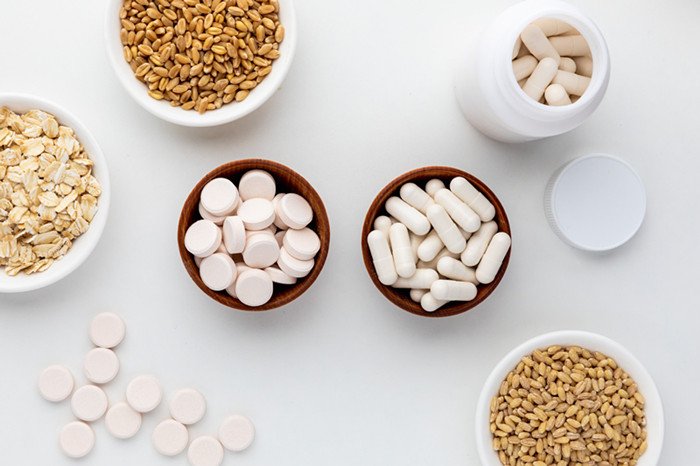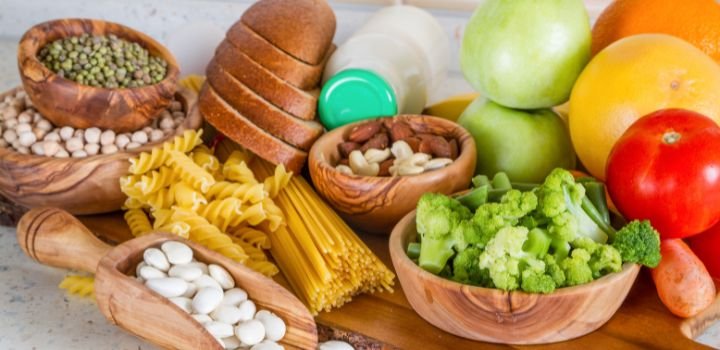Yeast beta glucans are sugars found in the cell walls of yeast.
These bioactive compounds have demonstrated activity on the immune system, regulating our immune response and intervening in the development of oncological processes.
According to published scientific evidence, yeast beta-glucans can effectively stimulate our defenses against bacterial infections, viruses, parasites. In addition, they act as biological response modifiers by modulating the host immune response, which has implications for protection against various diseases.
What are beta-glucans?
From a biochemical perspective, beta-glucans are a long chain of glucose units found in many substances and are considered soluble dietary fibers. Although most oat-based products have been associated with beta-glucans, they are not exclusive to these foods but can be found in other cereals, algae, and mushrooms.
Specifically, beta-glucans of yeast origin have bioactive potential and structural aspects with complex ramifications that give rise to triple helix formations related to their antitumor activity.
Some of the foods with beta-glucans are:
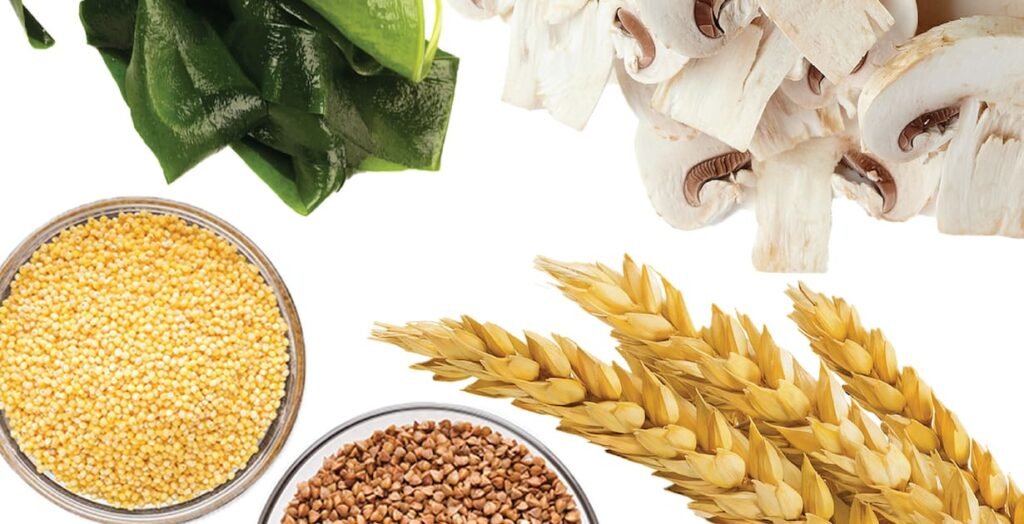
- Basidiomycete mushrooms
- Cereals such as barley, oats, rye, corn, rice.
- Marine algae
- Yeast beta-glucan Supplement
Yeast Beta-glucans: The best source for improving immunity
Yeast beta-glucan is derived from the baker’s yeast cell wall.
It has unique chemical qualities. It has β-(1,3) bonds in its main chain and has β-(1,6) branch points. Different studies have determined that this branched structure is relevant to their action on the immune system.
ハイイースト yeast beta-glucan has a test report by the USP standard show a beta-glucan content of up to 70%.
Other relevant structural aspects to beta-glucan activity are:
- Solubility: the higher the solubility, the higher the activity.
- Molecular size: the higher the molecular weight, the higher the activity could be observed.
- Branching points: β-(1,6)-type branching points.
- Branching form: the helical tertiary structure of yeast glucans is essential for their immunostimulatory activity. In contrast, algal beta-glucans have a linear structure.
Other questions about the yeast beta-glucan
ハイイースト is a biotech that researches and develops safe food supplements from baker’s yeast. We have a free consultation service that guides the proper use of our formulas.
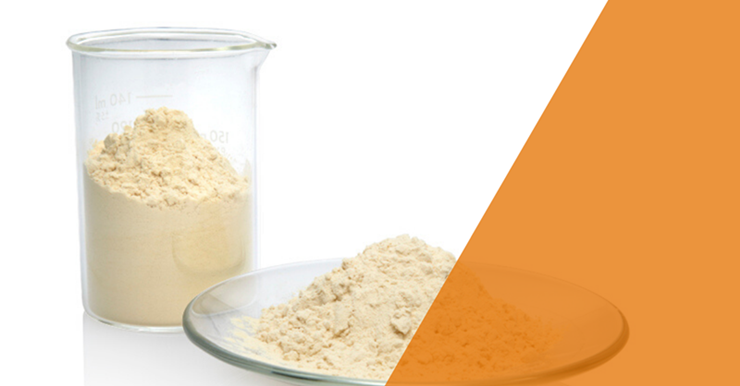
How are beta-glucans activated?
As we have seen, beta-glucans are part of the food we consume daily. However, we can also consume it in food supplements, where the concentration of these active substances is higher and is adapted to the so-called therapeutic dose. In any case, they are mostly administered orally, which raises the following question: how does the interaction with the immune system occur?
Gastrointestinal system
70-80 % of the cells of the immune system are located in the intestinal mucosa. This is, along with the nostrils and skin, one of our main access routes and contact with pathogenic organisms. The location of immune cells in the digestive system also allows orally administered beta-glucans to be captured and transported to the spleen, lymph nodes, and bone marrow. By interacting with immune cells, they may help activate the immune response.
On the other hand, as reported in other articles, yeasts act as prebiotics stimulating the growth of the intestinal microbiota, thus being beneficial for the organism.
Yeast beta-glucans and the immune system
Some polysaccharides and proteoglycans isolated from baker’s yeast have been shown to have antitumor activity. In an immunology study, this same species, whose scientific name is Saccharomyces cerevisiae, has shown potential as a therapeutic and preventive agent.
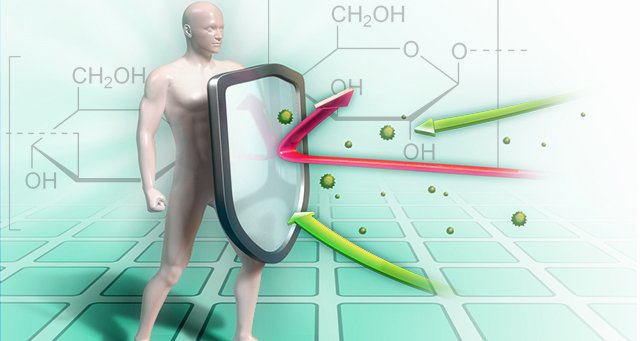
Yeast beta-glucans and allergies
In addition to antitumor effects, there are also studies on beta-glucans evaluating the impact of this type of polysaccharide on allergies and their associated symptoms: from rhinitis, conjunctivitis, itchy eyes, and throat, runny nose, and cough to fatigue and physical discomfort.
When an allergic reaction occurs, our body increases its defensive response. Then, from the usual balance, also called homeostasis, we move to an exacerbated response of the Th2 immune state or pro-inflammatory state where different chemical reactions occur. The release of histamine can cause the symptoms mentioned above.
A study published in 2013 by the journal Food Science & Nutrition reports a 4-week randomized trial in which the experimental group was given a beta-glucan formula. Compared to the group that received placebo, the subjects who consumed beta-glucans reported the following improvements:
Overall, it reduced allergy symptoms by 28%.
It reduces the severity of associated symptoms by 52%.
In general terms of well-being, the experimental group also recognized improvements in emotional well-being, physical health, and energy levels. On the other hand, concerning the reduction of symptoms associated with allergic processes, the following stand out:
It reduced insomnia by 53%.
The effect is a 57% reduction in symptoms affecting the eyes and mucous membranes (watery eyes, redness, itching, etc.).
It also reduces the problems such as itching, excess mucus, and other nose-related issues by 50% (postnasal drip, itching, sneezing, congestion, etc.).
The conjunction of these improvements resulted in an improvement of 56% in the quality of life of these allergy patients.

Biological Response Modifiers
The ability of beta-glucans to stimulate immune system cells such as macrophages, neutrophils, and NK cells has led to new clinical applications in which they are already used as adjuvants to improve the effectiveness of hospital treatments, especially for their anticancer potential.
Studies indicate that beta-glucans can prevent oncogenesis and, given their qualities on immune cells, beta-glucans can also inhibit tumor growth and expansion. Also, as an adjuvant treatment to chemotherapy and radiotherapy, beta-glucans have been shown to play a positive role in the restoration of red blood cells (hematopoiesis) after bone marrow injury.
Dyslipidemia, hypertension, and obesity
The practical use of dietary fiber has been reported in multiple studies. In addition, several scientific articles have even documented the benefits of beta-glucans in specific issues related to cardiovascular health, such as dyslipidemia, hypertension, and obesity.
As the above mentioned, the water solubility and molecular weight of beta-glucans determine factors in their activity on the immune system, which is also related to their action at the cardiovascular level and, particularly, to their hypocholesterolemic effect.
This summary of beta-glucans gives us an idea of the therapeutic possibilities of foods containing them and the possibilities that these substances offer to develop new treatments aimed at caring for our health and, in particular, for improving our immune and cardiovascular systems.
Reference:
- Akramiene D, Kondrotas A, Didziapetriene J, Kevelaitis E. (2007) Effects of beta-glucans on the immune system. Medicina (Kaunas). 43(8):597-606.
- Shiu-Nan Chen, Ching-Sheng Chang, Ming-Hsin Hung, Sherwin Chen, William Wang, Cheng-Jeng Tai, Chung-Lun Lu (2004) The Effect of Mushroom Beta-Glucans from Solid Culture of Ganoderma lucidum on Inhibition of the Primary Tumor Metastasis. Evid Based Complement Alternat Med. 252171.
- D. El Khoury, C. Cuda, B. L. Luhovyy, and G. H. Anderson (2012) Beta Glucan: Health Benefits in Obesity and Metabolic Syndrome. Journal of Nutrition and Metabolism Article ID 851362, 28 pages.
- Deepak Mudgil (2017) Dietary Fiber for the Prevention of Cardiovascular Disease (chapter 3) Fibers Interaction Between Gut Micoflora, Sugar Metabolism, Weight Control and Cardiovascular Health. Pages 35-59.
- Chan Y, Chang T, Chan CH, Yeh YC, Chen CW, Shieh B, Li C (2007) Immunomodulatory effect ofAgaricus blazeiMurill in Balb/cByJ mice. J Microbiol Immunol Infect. 2007;40:201–208.
- Vighi G,et al. (2008) Allergy and the gastrointestinal system. Clinical and Experimental Immunology, 153 (Suppl. 1): 3–6.
- Solomon P. Wasser, Alexander L. Weis (1999) Medicinal Properties of Substances Occurring in Higher Basidiomycetes Mushrooms: Current Perspectives (Review). DOI: 10.1615/IntJMedMushrooms.v1.i1.30. Pages 31-62.
- Mendel Friedman (2016) Mushroom Polysaccharides: Chemistry and Antiobesity, Antidiabetes, Anticancer, and Antibiotic Properties in Cells, Rodents, and Humans. Foods, 5(4), 80
- John A.Bohn, James N., BeMiller (1995) (1→3)-β-d-Glucans as biological response modifiers: a review of structure-functional activity relationships. Carbohydrate Polymers. Volume 28, Issue 1, Pages 3-14.
- Chan GC, Chan WK, Sze D (2009) The effects of beta-glucan on human immune and cancer cells. J Hematol Oncol. 2009 Jun 10;2:25. DOI: 10.1186/1756-8722-2-25.
- Jayachandran M, Xiao J, Xu B (2017) A Critical Review on Health Promoting Benefits of Edible Mushrooms through Gut Microbiota.Int J Mol Sci. 2017 Sep 8;18(9). PII: E1934. DOI: 10.3390/ijms18091934.
- Takashi Norisuye(1985) Triple‐stranded helical structure of schizophyllan and its antitumor activity in aqueous solution. Supplement: Microsymposium of Polymer Effects.Volume14, Issue S19851.Pages 105-118.
- Talbott, S. M., Talbott, J. A., Talbott, T. L., & Dingler, E. (2014). β-Glucan supplementation, allergy symptoms, and quality of life in self-described ragweed allergy sufferers.Food science & nutrition、1(1), 90–101.

